The OnePlus 6 Review: Among The Best Of 2018
by Andrei Frumusanu on July 27, 2018 8:30 AM EST- Posted in
- Mobile
- Smartphones
- OnePlus
- OnePlus 6
Camera - Architecture & UI
The OnePlus 6 offers a new Sony IMX519 sensor as the main rear camera shooter. It comes with a 16MP resolution with pictures coming out at 4608 x 3456 resolution. The sensor has a slight pixel size disadvantage compared to other 12MP 1.4µm main camera shooters as the 1/2.6” sensor results in 1.22µm pixels. The optics on the main sensor is an f/1.7 aperture lens with a 25mm equivalent focal length. The module also comes with OIS.
As mentioned in the introduction, the second camera of the OP6 is an oddity as its optics isn’t any different from the main shooter, it’s still an f/1.7 lens with the same viewing angle. The sensor here is a 20MP Sony sensor with 1µm pixel pitches. OnePlus uses this secondary sensor for depth information such as in portrait mode (even though the blurring is done computationally), and is said to use it in certain low-light conditions in coordination with pixel binning to 5MP and rescaling to result in better low-light photography. I’ve had a hard time trying to figure out exactly how the low-light functionality works and didn’t really see much effect in my testing, and there’s been seemingly a large consensus among the community and reviewers that OnePlus should just have went with a telephoto module here as the current use of the second sensor seems like a bit of a waste given the limited use-cases.
Interface-wise the camera app was a joy to use and OnePlus used the KISS principle (Keep it simple, stupid) with only providing the most essential interface elements and shooting modes. Over the last year or two we’ve seen some vendors go down the rabbit hole of offering added shooting modes over shooting modes, which in effect vastly decreased the shooting experience as in many cases you’re not actually sure which mode will result in the best quality result. The OnePlus 6 on the other hand is very straightforward as the default mode it comes in is essentially what you’ll use all the time.
Alongside the auto mode, there’s quick swipe actions to video and portrait mode, and the rest of the basic functions such as slow motion, time-lapse, pro-mode, panorama and the new integrated Google Lens mode are also very quickly accessible.
One thing I was actually surprised to see is that the camera doesn’t offer any resolution choice other than a quick switch between 4:3, 19:9 and 1:1 aspect ratios. Again I think this is positive as effective there shouldn’t really be any reason why you’d want to capture in a resolution less than the full sensor width/height.
Camera - Daylight Evaluation

[ OnePlus 6 ]
[ G7 ] - [ G6 ] - [ V30 ]
[ Mi MIX 2S ] - [ Pixel 2 XL ] - [ Mate 10 ] - [ P20 ]
[ P20 Pro ] - [ S8 ] - [ S9+ ] - [ iPhone X ]
In this first scene we see the OnePlus 6 really take advantage of the 16MP increased resolution as it’s able to maintain an excellent amount of detail, closely battling with the Galaxy S9 in terms of actual effective spatial resolution, and obviously the P20 Pro’s 40MP shots just have brute force things in terms of detail.
In terms of exposure, the OP6 performed among the best as in my view it had one of the best retentions of highlights and dynamic range. Overall the processing here is extremely similar to the MIX 2S; I wouldn’t be surprised if this is generally some kind of common behaviour of the Snapdragon 845 ISP.
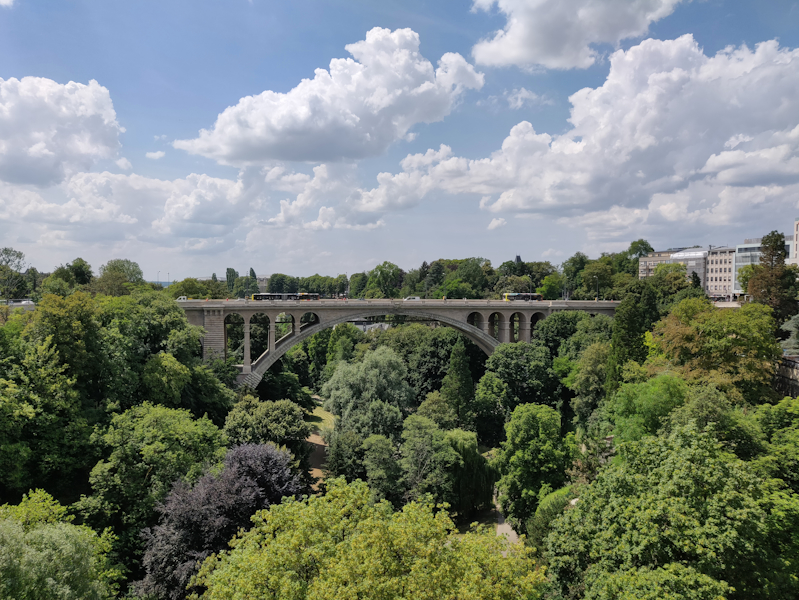
[ OnePlus 6 ]
[ G7 ] - [ G6 ] - [ V30 ]
[ Mi MIX 2S ] - [ Pixel 2 XL ] - [ Mate 10 ] - [ P20 ]
[ P20 Pro ] - [ S8 ] - [ S9+ ]
[ iPhone X ]
The next bridge scene again fares extremely well for the OnePlus 6 – the exposure is able to retain the sufficient highlights in the sunlit foliage and clouds and is able to beat a lot of phones, bar the LG V30 and P20Pro. Only the latter in its sensor pixel binning mode is able to achieve sufficient native high dynamic range.
Detail wise again the OP6 is pulling punches with the S9 and personally I would prefer the OP6’s results here as it’s able to perform better on the foliage detail due to its increased resolution.
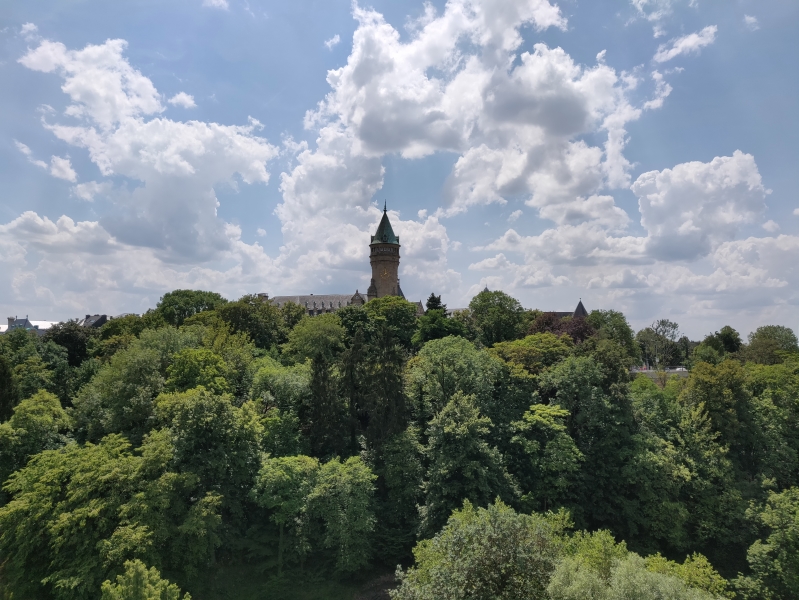
[ OnePlus 6 ]
[ G7 ] - [ G6 ] - [ V30 ]
[ Mi MIX 2S ] - [ Pixel 2 XL ] - [ Mate 10 ]
[ P20 ] - [ P20 Pro ]
[ S9+ ] - [ iPhone X ]
The next shot we come to a similar conclusion as the OnePlus 6 manages one of the best overall results compromising between maintaining sufficient dynamic range in the shot and not flattening out the highlights of the bottom half of the scene as much as other phones.
Detail wise again it’s a close battle between the S9 and the OP6. The S9 preserves a tad more shadow detail in some areas as it’s HDR is able to bring them out a bit more, but again this also causes the highlights to disappear. Sharpness wise I think the OP6 does the best job on the wide shot – this scene in particular would have really benefitted from a telephoto lens for the OP6.
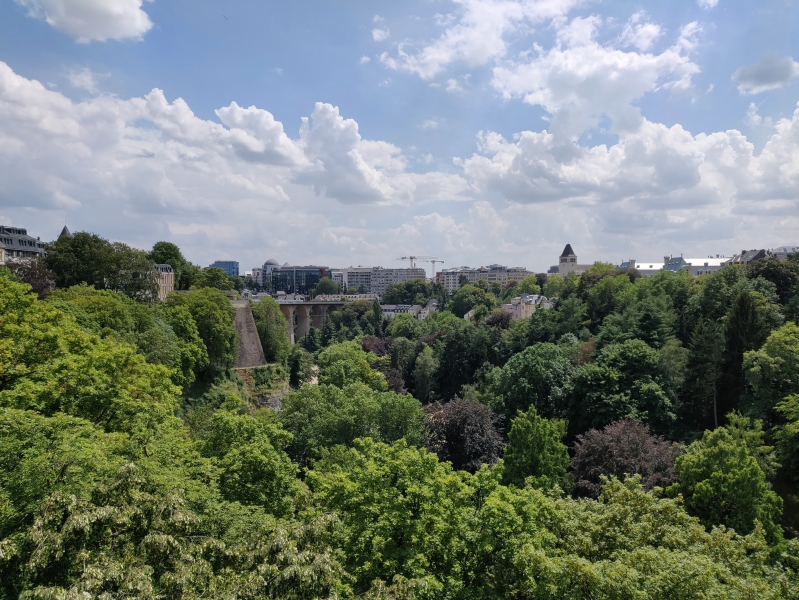
[ OnePlus 6 ]
[ G7 ] - [ G6 ] - [ V30 ]
[ Mi MIX 2S ] - [ Pixel 2 XL ] - [ Mate 10 ]
[ P20 ] - [ P20 Pro ]
[ S8 ] - [ S9+ ] - [ iPhone X ]
The final scene of this type is a repeat story of the previous two – the OP6 is among the best in managing to preserve the dynamic range throughout the whole scene as other devices’ HDR processing really flatten out the image on the bottom half in favour of the sky, the iPhone X and the LG V30 are the two other phones who do the best here but I favour the OP6’s and V30’s colour renditions.
Detail wise the OP6 wins again over the competition, albeit it looks like the S9 has less issue with chromatic aberration that can be seen in some parts of the OnePlus shot. The P20Pro’s 40MP mode in this shot resulted in a mess so wasn’t of consideration.

[ OnePlus 6 ]
[ G7 ] - [ G6 ]
[ V30 ] - [ Mi MIX 2S ] - [ Pixel 2 XL ]
[ Mate 10 ] - [ P20 ] - [ P20 Pro ] - [ S8 ] - [ S9+ ] - [ iPhone X ]
The OP6 in the abbey shot is again really good as it’s able to produce a well-balanced exposure retaining high dynamic range throughout the shot. The MIX 2S in the second sample is actually seemingly again the nearest in terms of processing, but the OP6 went for a longer exposure and results in just a brighter picture which I think is better.
Detail wise, the V30 and S9 are the closest competitors to the OP6. The V30 has a narrower field of view and this results in an advantage in terms of spatial resolution versus the OP6.
In the OP6 shot again at 3/4ths of the screen we can see chromatic aberration most likely caused by defects in one of the lenses, this seems to be localised to the right side of the screen as the left side look to suffer from such visible effect.
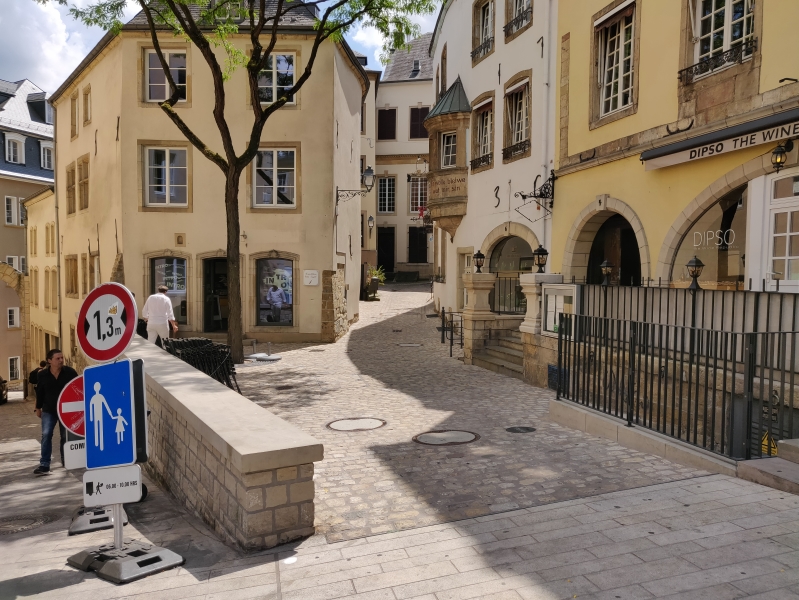
[ OnePlus 6 ]
[ G7 ] - [ G6 ] - [ V30 ] - [ Mi MIX 2S ] - [ Pixel 2 XL ]
[ Mate 10 ] - [ P20 ] - [ P20 Pro ] - [ S8 ] - [ S9+ ] - [ iPhone X ]
In this shot again the OP6 is most closely matched up with the MIX 2S in terms of exposure and colour balance. Although the OP6 seems to have better resolution, the S9 brings out much better texture detail throughout the scene.

[ OnePlus 6 ]
[ G7 ] - [ G6 ] - [ V30 ]
[ Mi MIX 2S ] - [ Pixel 2 XL ] - [ Mate 10 ] - [ P20 ] - [ P20 Pro ]
[ S8 ] - [ S9+ ] - [ iPhone X ]
In the shop front shot with lots of detail and colours I think the OP6 I think misses it a bit in terms of colour temperature as it’s too warm, and it’s also flattening out the highlights a bit too much as it’s trying to bring out the shadows a lot more than other phones.
Detail wise, again in some parts of the scene the OP6 is the winner, however the large aperture lens doesn’t do it favour as we can see chromatic aberrations, most visible on the haze of the left most elephant as well as on the blurriness of the silver elephant in the shop window.

[ OnePlus 6 ]
[ G7 ] - [ G6 ] - [ V30 ] - [ Mi MIX 2S ] - [ Pixel 2 XL ]
[ Mate 10 ] - [ P20 ] - [ P20 Pro ] - [ S8 ] - [ S9+ ] - [ iPhone X ]
In the last shot I try to evaluate the colour reproduction and dynamic range one of the toughest scenarios for smartphones – getting the correct colour reproduction on flowers such as the imaged petunias. Some phones such as the iPhone X can come completely off-mark here and essentially every phone has its own interpretation. Wrong HDR processing here can really ruin the shot. Unfortunately the OnePlus 6, while doing well in terms of colour balance, fall prey to the processing as it flattens the highlights too much as it tries to bring out more shadows off-subject. The V30 and S9 have the best colour reproduction, but the S9 is a step ahead in terms of avoiding colour clipping as well as detail retention.
Overall the OnePlus 6 in daylight was an extremely good shooter competing for the top in terms of picture quality. I really enjoyed seeing it having a really good HDR implementation that didn’t flatten out much of the highlights in sunny conditions – something other smartphones have a tendency to do. Consistency of the OP6 has been also great in daylight, and I haven’t had really any bad shots with the phone.
In terms of detail, the OP6’s 16MP sensor can take the top spot in terms of details and in many scenes takes the top spot in terms of resulting spatial resolution, however its detail consistence across the scene isn’t equal because it seemingly suffers in sharpness due to its optics and imperfect lens that results in chromatic aberrations in distinct parts of the scene.
In normal daylight shots, the secondary camera seems to be essentially useless as I haven’t found any use-case for it yet. This could have been replaced with a telephoto lens in my opinion, but let’s first see the night time shots.



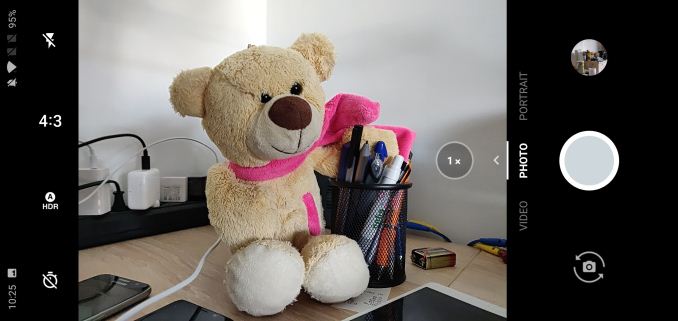

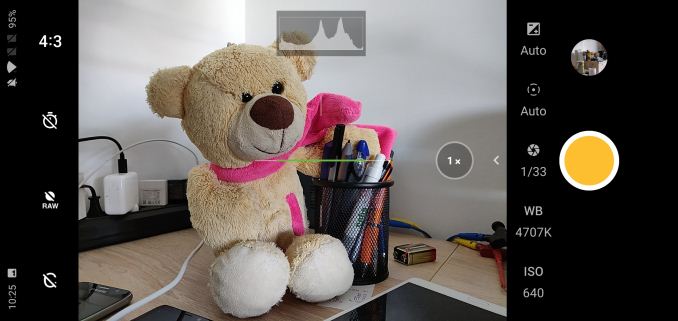








90 Comments
View All Comments
Total Meltdowner - Friday, July 27, 2018 - link
Art Photography? I'm not an unemployed liberal. I like phones to snap photos of family and friends doing things worth remembering.Cooe - Saturday, July 28, 2018 - link
Jesus Christ...Quantumz0d - Friday, July 27, 2018 - link
Starting with the wireless charging changing ergonomics and thickness, I refute. Look up at LG V30 - 7.3mm zero bump no notch. Has Qnovo on top of it, looks better made better with MIL spec. IP68 certified as well. OnePlus failed at Metal design with signal flaw with OP3/T and they cheaped out with glass just for marketing this time. About time when they ditch the jack. OPPO started that with their feeble built Find X.Too soft on Oneplus and other companies notch "there's really nothing controversial" its downright copied from Apple except that keeping the bottom bezel for no reason except to make it a marketing trash. Blacking it out for what ? Breaking the Android apps, but like all mainstream brainwashers Google also decided to add it with utter shameless act. Seems like even at AT no one cares about originality or engineering anymore. Shame
No mention of absence of Video out, Netflix certification. Same battery capacity since OP3T. And Axon 7 from 2016 is able to sell a 1440P AMOLED panel at same/less cost with more features like Stereo front facing. AKM DAC wgich works with Lineage. While OP cuts corners at all specs just increase the RAM and Memory that's it. Pixel 2XL shreds OP in speed with low RAM, not against it but this phone is hot garbage.
Oh this phone doesn't have USB3.0 either. CEO says no one uses when we have LTE pure BS. Why are they incl the high capacity UFS then ? Rubbish selfless corp. After being burned at the Op3 promised blobs and the worst part of this phone not mentioned, the T variant. Which makes the Op6 users look like fools, why don't this get mentioned anywhere ? Is OP paying that hefty ? Guess so since they skimp so much and price increase..its a disgrace.
Sultanxda left OP because they never bother to fix the camera or treat it as some high profile golden IP, or the 821 3T high clock crash. Dash charging, another proprietary technology, no way you can find replacement parts for this phone because 5-6Month EOL is extreme ripping.
dshess - Friday, July 27, 2018 - link
I wish one of the second-tier vendors would commit to long-term hardware support. At $600 (or $800), the story is when they manage to make a phone that sucks - but making an excellent phone for $250 is a great story, especially if you can still purchase the same device a few years later. It's like nobody is even trying to take on the iPhone.icalic - Friday, July 27, 2018 - link
Hi @Andrei Frumusanu,why no more gfxbench manhattan es 3.1 / metal test for battery life and final frame rate @ 200 nits?
i think that test is good for us to look GPU efficiency on every device.
for oneplus 6, i suspect high sustained gfxbench followed by higher power consumption than other snapdragon 845 devices.
Andrei Frumusanu - Friday, July 27, 2018 - link
Power consumption between devices doesn't really change. In this regard I'm keeping the power measurements to the initial SoC reviews of the first devices. The power I measured on the OP6 was not much different than on the S9+ which is covered here: https://www.anandtech.com/show/12520/the-galaxy-s9...The final frame rate benchmark has been superseded by the sustained performance measurements across all 3D workloads, so there's no need for a separate metric.
As for battery measurement in 3D workloads, I think the GFXBench test as an actual *battery* test didn't really convey a lot other than a maximum rundown test. I think having a phone loop in an actual commonly released game would be better representative. As a reminder, the SoC's power consumption will differ greatly at different frequencies and real games will be Vsync capped at 60fps, so in actual use-cases the MH3.1 battery test didn't really show a representation of such use-cases. Currently I'm still thinking about a way to do this better and hopefully the methodology will evolve, but for now it's as it is due to practical reasons.
arvindgr - Friday, July 27, 2018 - link
In OnePlus 3 review, AT included note on USB, that they're still using USBv2! But 4 generations later OP6 still packs that same USBv2 tech. Also with Oppo proprietary charging tech, they are least bothered about USB-PD standards which its SoC supports via QCv4. Why such tech implementations weren't discussed at all..?Andrei Frumusanu - Friday, July 27, 2018 - link
USB 3.0 has issue with creating radio frequency interference in the 2.4GHz band which requires vendors to do a lot more engineering in terms of shielding, that's why a *lot* of phones don't support it.In regards to fast charging techniques - first of all ever since I came back to AT I haven't had the opportunity to re-test all the devices over the last year that we were missing data on. Secondly I didn't prioritise this as much because I feel after 5V/2A/10W which essentially every device nowadays supports, faster charging rates become diminishingly relevant.
Batteries are supposed to be charged at a maximum of 1C, for the OP6 that's for example 3.3A since the capacity is 3.3Ah. A 10W charger is already 2.38A, going to 15W is getting near the limit. Devices nowadays also have like 10 different charging profiles depending on what power supply you connect to it, so while true we can resume testing the stock charger, but again in reality how representative is that really for most people, especially among AT readers?
Quantumz0d - Friday, July 27, 2018 - link
Appreciate the response for this. I always wonder what's the reason behind cutting costs for USB spec. And about the Dash charge, it's proprietary you are stuck with using the accessories from OP site only and usable with their HW only. Its not about speed its about adopting standards like USB PD or QC.Andrei Frumusanu - Friday, July 27, 2018 - link
> Its not about speed its about adopting standards like USB PD or QC.I think that's a weird attitude to take. QC or PD are just ways to achieve speed. A 10W 2A non-standard charger will charge the same as a 10W QC, PD, Dash or whatever charger. Electrons don't care about the standard.